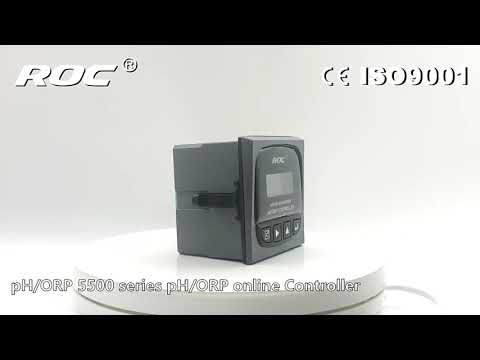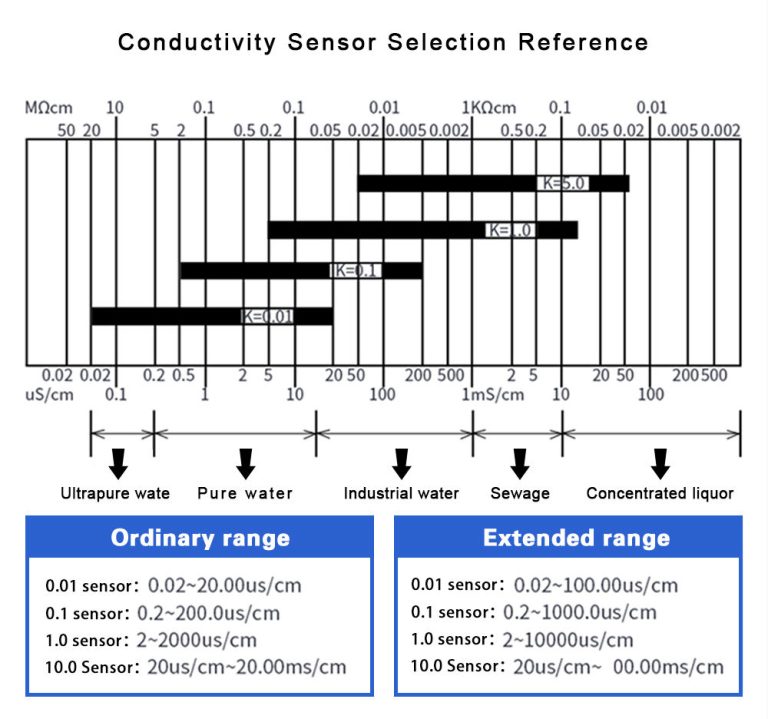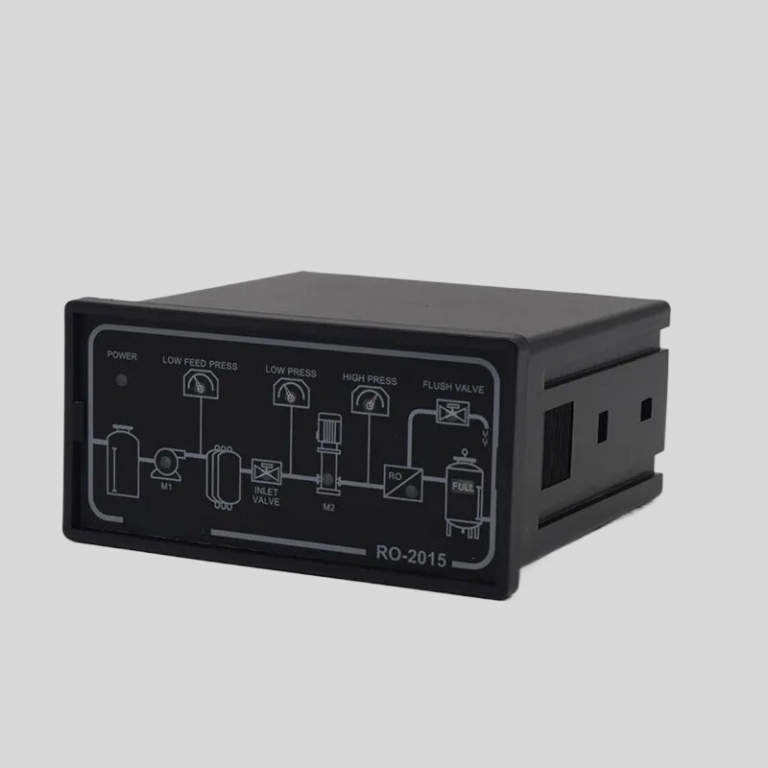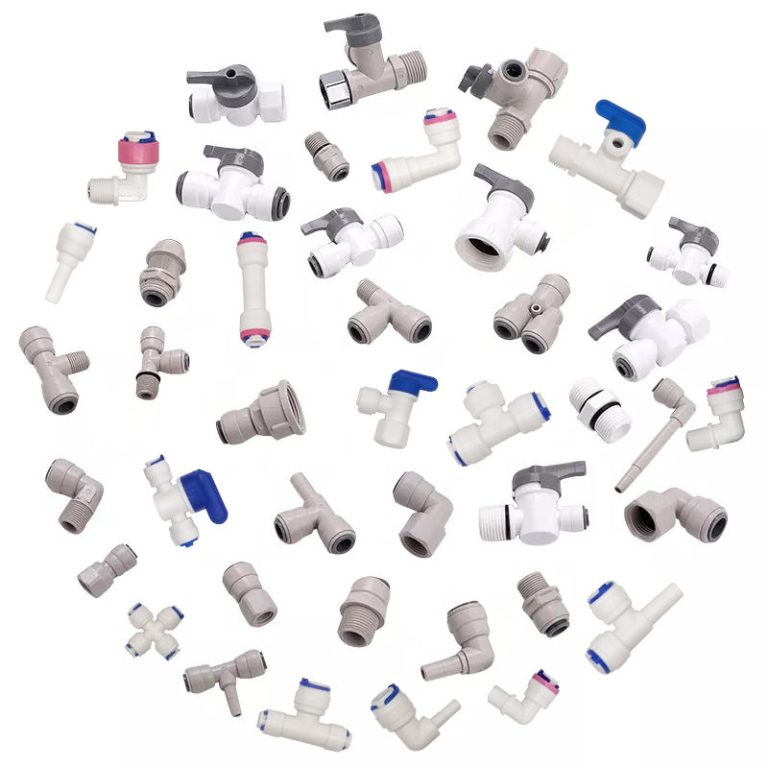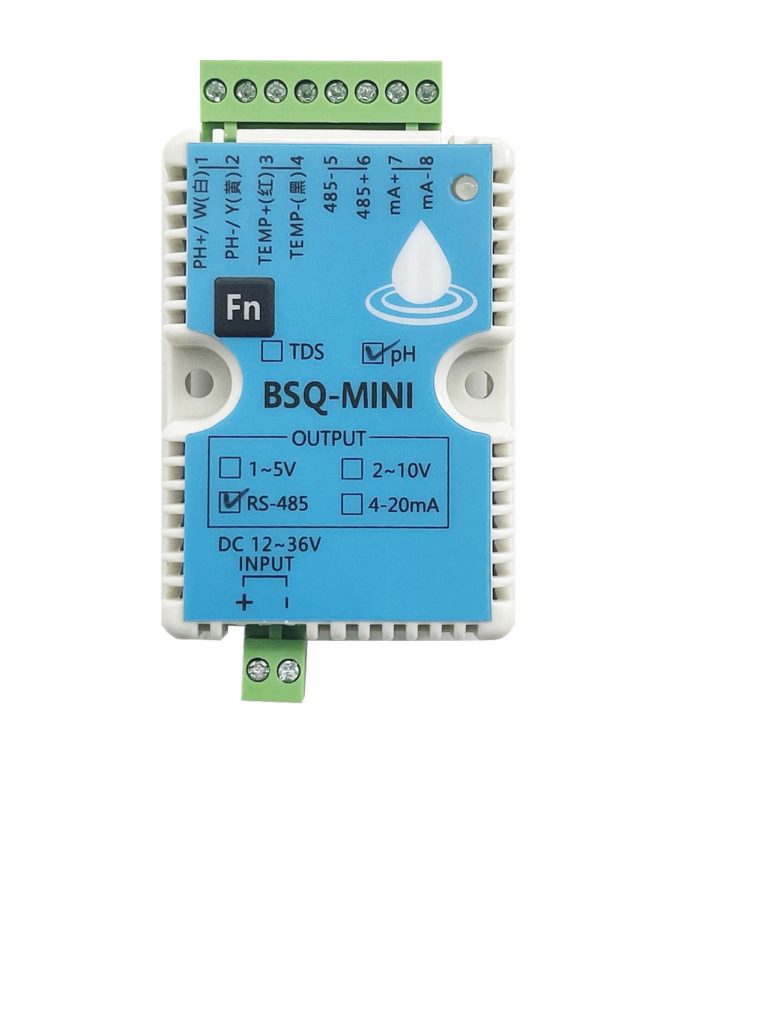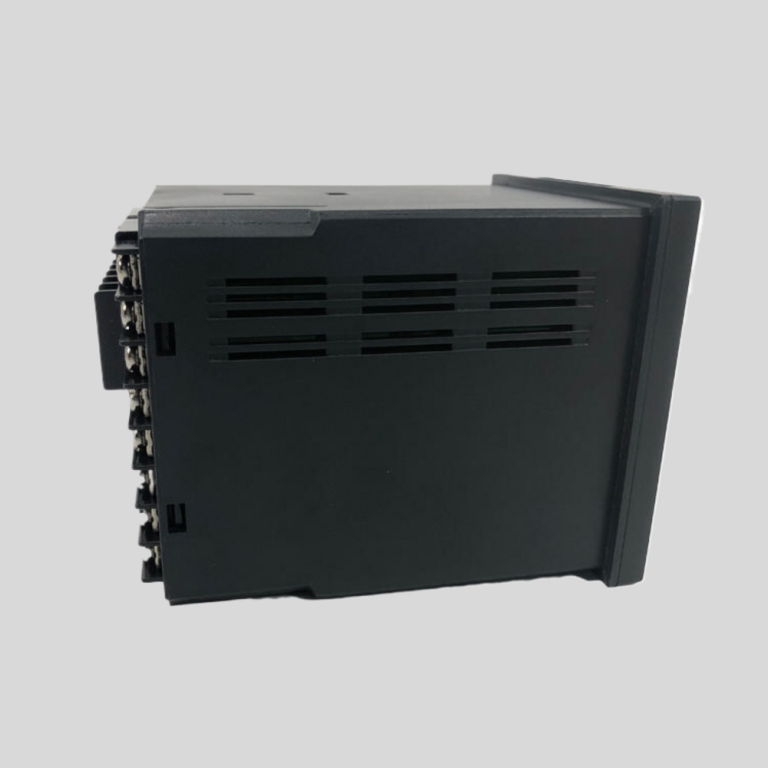Table of Contents
Understanding the Functionality of Online Conductivity Sensors
Online conductivity sensors are innovative devices that have revolutionized the way we measure the ability of a solution to conduct an electric current. These sensors are widely used in various industries, including water treatment, food and beverage, pharmaceutical, and chemical production. Understanding the functionality of online conductivity sensors is crucial to appreciate their significance and make the most of their application.
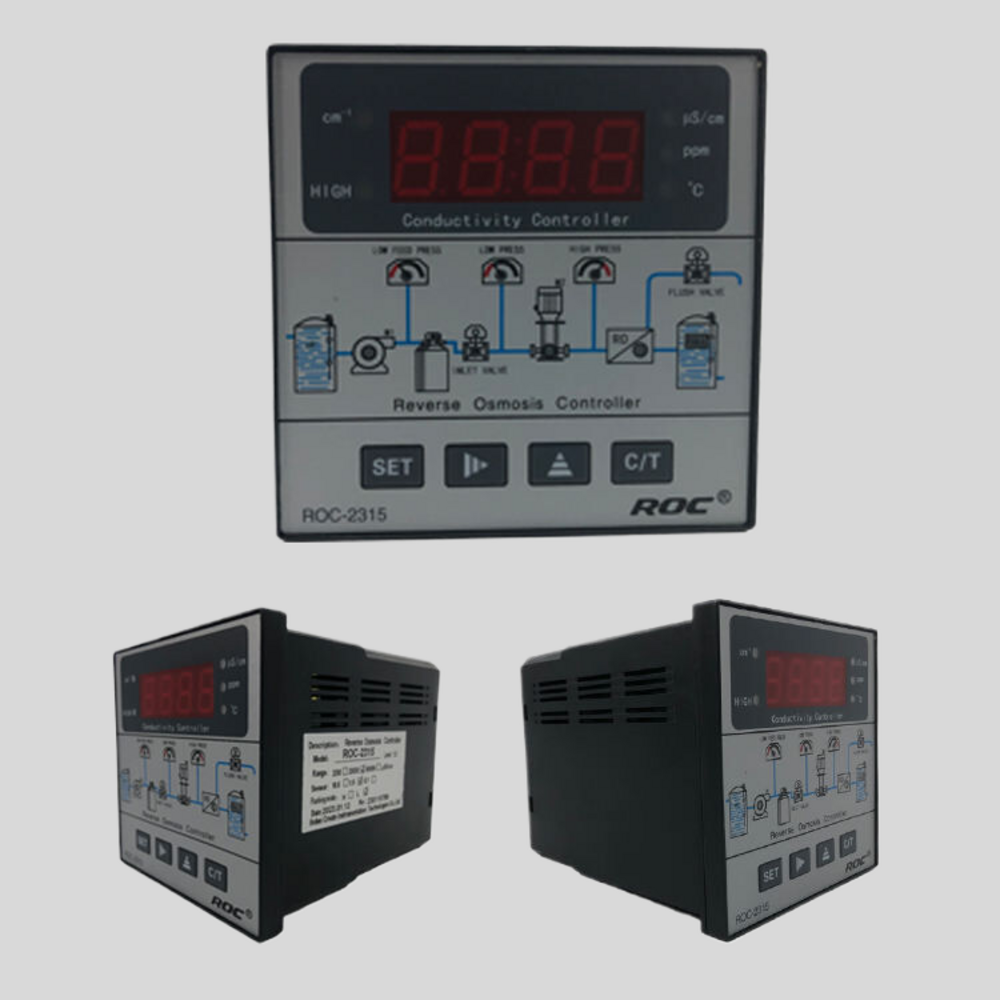
Online conductivity sensors work on a simple principle. They measure the ability of a solution to conduct an electric current between two electrodes. The conductivity of a solution is directly proportional to the concentration of ions present in it. Therefore, by measuring the conductivity, these sensors can determine the concentration of ions in a solution, providing valuable information about its composition and purity.
| Model | EC-1800 online conductivity controller |
| Range | 0-2000/4000uS/cm 0-20/200mS/cm |
| 0-1000/2000PPM | |
| Accuracy | 1.5%, 2%, 3%(FS) |
| Temp. Comp. | Automatic temperature compensation based on 25℃ |
| Oper. Temp. | Normal 0~50℃; High temp 0~120℃ |
| Sensor | C=0.1/1.0/10.0cm-1 |
| Display | 128*64 LCD Screen |
| Communication | 4-20mA output/2-10V/1-5V/RS485 |
| Output | High/Low limit dual relay control |
| Power | AC 220V±10% 50/60Hz or AC 110V±10% 50/60Hz or DC24V/0.5A |
| Working Environment | Ambient temperature:0~50℃ |
| Relative humidity≤85% | |
| Dimensions | 96×96×100mm(H×W×L) |
| Hole Size | 92×92mm(H×W) |
| Installation Mode | Embedded |
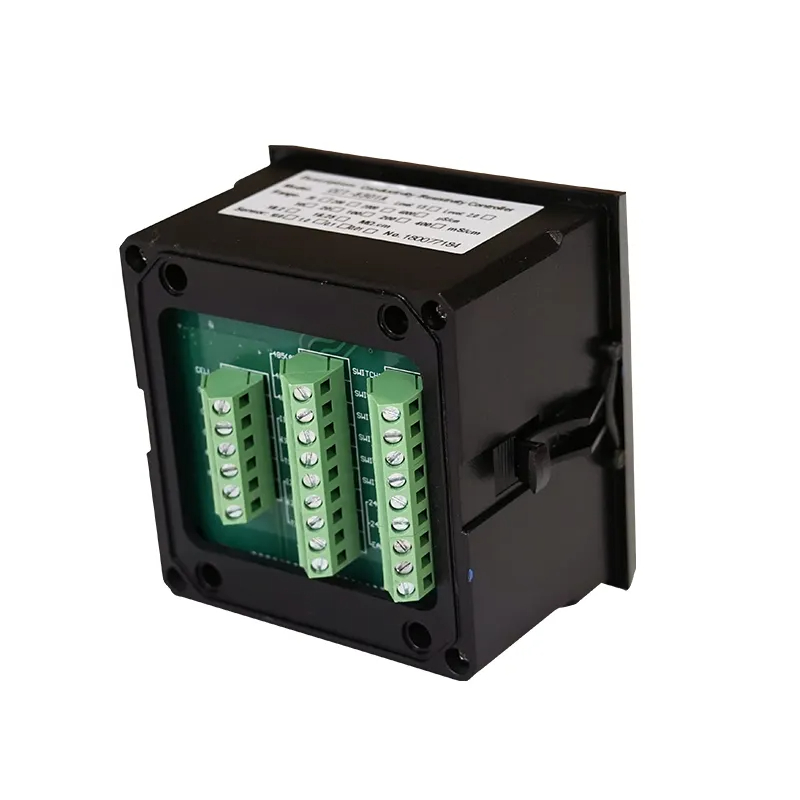
The operation of an online conductivity sensor begins with the application of an alternating voltage to two electrodes immersed in the solution. The ions present in the solution facilitate the flow of current between the electrodes. The sensor then measures this current and converts it into a conductivity value. This value is typically expressed in microsiemens per centimeter (µS/cm) or millisiemens per centimeter (mS/cm), depending on the concentration of ions in the solution.
One of the key advantages of online conductivity sensors is their ability to provide real-time data. Unlike traditional methods that require sample collection and laboratory analysis, these sensors can continuously monitor the conductivity of a solution, providing instant and accurate results. This feature is particularly beneficial in industrial processes where changes in solution composition can have significant implications. For instance, in water treatment plants, online conductivity sensors can quickly detect changes in water quality, allowing operators to take immediate corrective action.
Another significant benefit of online conductivity sensors is their versatility. They can be used to measure the conductivity of a wide range of solutions, from pure water to highly concentrated electrolytes. Moreover, they can operate under various conditions, including different temperatures and pressures. This versatility makes them suitable for a wide range of applications, from monitoring the purity of drinking water to controlling the concentration of chemicals in industrial processes.
| Model | POP-8300 free chlorine online analyzer |
| Measurement range | (0.00-2.00)mg/L(ppm) (0.00-20.00)mg/L(ppm) |
| Accuracy | Indication error 10% |
| Resolution | 0.01mg/L(ppm) |
| Communication interface | RS485 MODBUS RTU communication protocol |
| Analog output | Double channel (4-20)mA output; Isolated, reversible, completely adjustable, instrument/transmitter dual mode; ±0.1mA transmission accuracy |
| Control output | Double channels, Load capacity 50mA(Max),AC/DC 30V |
| Power supply | Connected to electric supply AC80-260V;50/60Hz, compatible with all international market power standards(110V;220V;260V;50/60Hz). |
| Working environment | Temperature:(5-50)℃;relative humidity:≤85% RH(non-condensation) |
| Power Consumption | <20W |
| Storage environment | Temperature:(-20-70)℃;relative humidity:≤85%RH(non-condensation) |
| Installation | Wall mounted (with the preset back cover) |
| Cabinet weight | ≤10kg |
| Cabinet dimension | 570*mm*380mm*130mm(H×W×D) |
Despite their numerous advantages, online conductivity sensors also have some limitations. For instance, they can be affected by factors such as temperature, pressure, and the presence of non-ionic substances in the solution. Therefore, it is essential to calibrate these sensors regularly and use them in conjunction with other measurement techniques to ensure accurate results.
In conclusion, online conductivity sensors are powerful tools that offer a fast, accurate, and versatile method for measuring the conductivity of solutions. They provide real-time data, enabling operators to monitor and control processes more effectively. However, like any other measurement device, they must be used correctly and maintained properly to ensure their accuracy and reliability. By understanding the functionality of online conductivity sensors, users can harness their full potential and contribute to more efficient and effective operations in various industries.
The Role of Online Conductivity Sensors in Water Quality Monitoring
Online conductivity sensors play a pivotal role in water quality monitoring, providing critical data that helps ensure the safety and purity of our water supplies. These sensors, which measure the ability of water to conduct an electrical current, offer a reliable and efficient method for assessing water quality in real time.
The principle behind the operation of online conductivity sensors is relatively straightforward. They work by applying a voltage between two or more electrodes submerged in the water. The resulting current is then measured, providing a direct indication of the water’s conductivity. This conductivity is primarily determined by the concentration of ions in the water, which in turn is influenced by the presence of dissolved salts and other inorganic materials.
One of the key advantages of online conductivity sensors is their ability to provide continuous, real-time monitoring of water quality. Traditional methods of water quality assessment often involve collecting samples and sending them to a laboratory for analysis. This process can be time-consuming and may not provide an accurate reflection of the water’s quality at the time of testing. In contrast, online conductivity sensors can provide immediate feedback on changes in water quality, allowing for prompt action to be taken if necessary.
Moreover, online conductivity sensors are highly versatile and can be used in a wide range of applications. They are commonly used in water treatment plants to monitor the effectiveness of the treatment process and ensure that the treated water meets the required standards. In addition, they are used in various industrial processes where water quality is critical, such as in the pharmaceutical and food and beverage industries. They are also used in environmental monitoring, helping to detect pollution in rivers, lakes, and other bodies of water.
The data provided by online conductivity sensors can also be used to inform decision-making processes. For instance, in a water treatment plant, if the conductivity readings indicate that the water’s ion concentration is too high, this could signal that the treatment process is not working effectively. This would prompt further investigation and potentially lead to changes in the treatment process to improve its effectiveness.
Furthermore, online conductivity sensors can help to identify trends in water quality over time. By continuously monitoring conductivity, it is possible to detect gradual changes that might not be apparent from a single measurement. This can provide valuable insights into the health of a water system and help to identify potential issues before they become serious problems.
In conclusion, online conductivity sensors are an invaluable tool in water quality monitoring. They offer a reliable, efficient, and versatile method for assessing water quality in real time. By providing continuous monitoring and immediate feedback, they enable prompt action to be taken when necessary, helping to ensure the safety and purity of our water supplies. Moreover, the data they provide can inform decision-making processes and help to identify trends in water quality over time. As such, they play a pivotal role in safeguarding our water resources and protecting public health.

